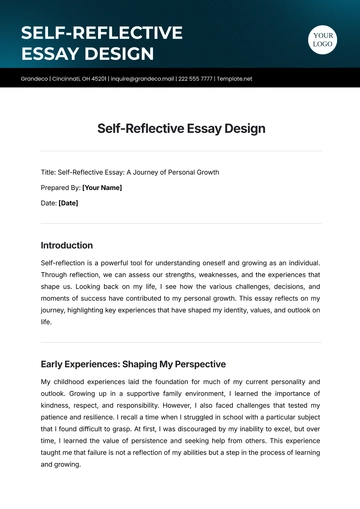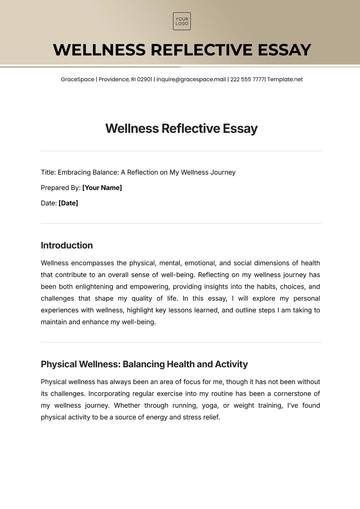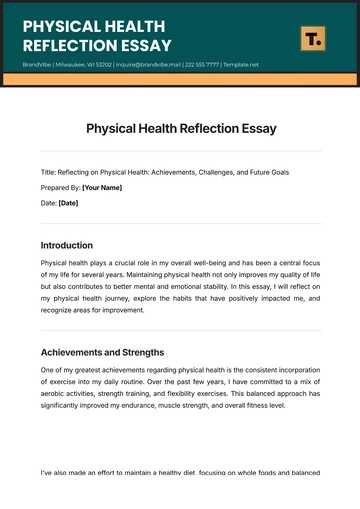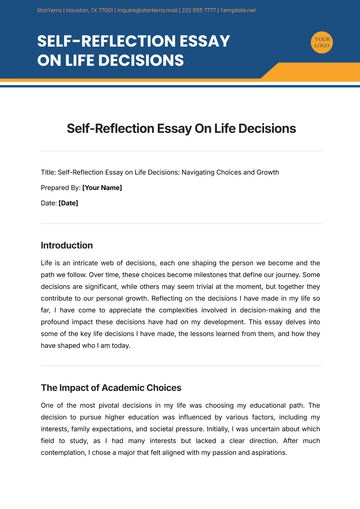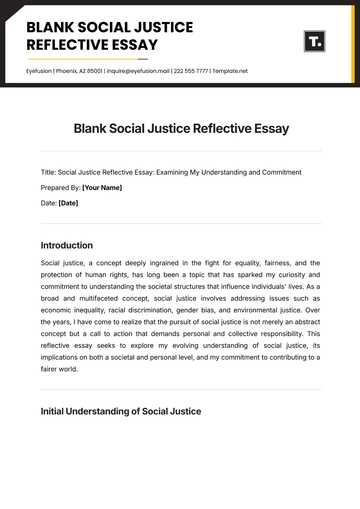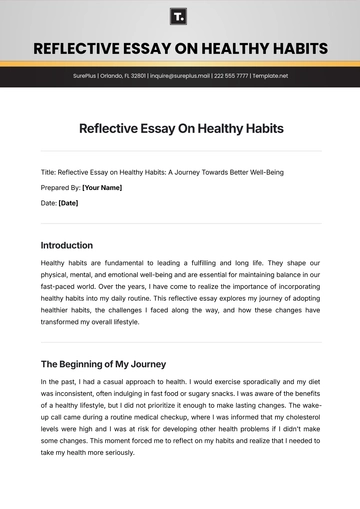Free Aesthetic Reflective Essay On Teaching
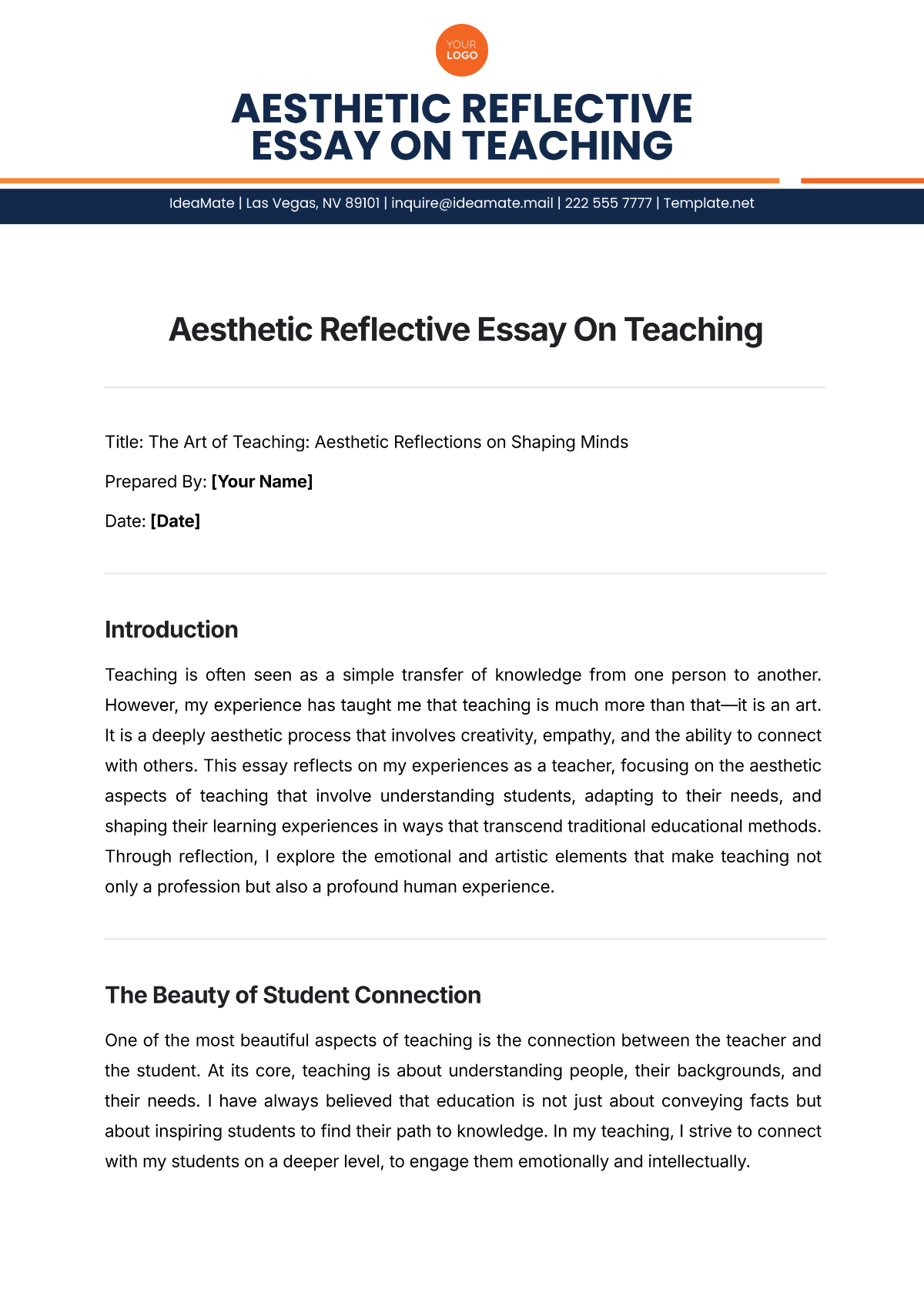
Title: The Art of Teaching: Aesthetic Reflections on Shaping Minds
Prepared By: [Your Name]
Date: [Date]
Introduction
Teaching is often seen as a simple transfer of knowledge from one person to another. However, my experience has taught me that teaching is much more than that—it is an art. It is a deeply aesthetic process that involves creativity, empathy, and the ability to connect with others. This essay reflects on my experiences as a teacher, focusing on the aesthetic aspects of teaching that involve understanding students, adapting to their needs, and shaping their learning experiences in ways that transcend traditional educational methods. Through reflection, I explore the emotional and artistic elements that make teaching not only a profession but also a profound human experience.
The Beauty of Student Connection
One of the most beautiful aspects of teaching is the connection between the teacher and the student. At its core, teaching is about understanding people, their backgrounds, and their needs. I have always believed that education is not just about conveying facts but about inspiring students to find their path to knowledge. In my teaching, I strive to connect with my students on a deeper level, to engage them emotionally and intellectually.
There is an undeniable beauty in watching a student’s face light up when they finally understand a difficult concept. That moment, when the student’s confusion transforms into clarity, is one of the most satisfying parts of teaching. This aesthetic aspect of teaching—the emotional and cognitive shift that occurs when a student grasps new knowledge—is the heart of the teaching process. It is a reminder that teaching is a creative endeavor where the outcome is not always predictable but always rewarding.
The Art of Adaptation
Teaching requires flexibility, not only in terms of adapting lesson plans but also in responding to the varied needs of students. Each student brings a unique set of skills, experiences, and challenges to the classroom, and as a teacher, I have learned that it is essential to adapt my teaching style to best support them. Whether it is modifying the way I present material, offering additional resources, or providing one-on-one support, adaptation is key.
This adaptive quality of teaching is akin to the work of an artist. Just as an artist must respond to the medium they work with—whether it is paint, clay, or sculpture—a teacher must be attuned to the needs of their students. The process of making learning accessible, engaging, and meaningful is, in itself, an artistic act. It involves intuition, creativity, and the ability to adjust in real time based on the needs of the students.
The Aesthetic of Teaching Methods
Another key element of teaching that reflects its aesthetic nature is the use of creative methods to engage students. Teaching is not simply about delivering information but about creating an environment that fosters curiosity and exploration. I have always tried to bring a sense of creativity into my lessons, whether through storytelling, interactive activities, or real-world applications of the material.
For instance, in teaching literature, I often incorporate multimedia elements such as films, music, and art to deepen students' understanding of the texts. These elements provide an immersive experience that helps students connect with the material on a more personal and emotional level. In teaching science, I use hands-on experiments and demonstrations that not only illustrate the concepts but also captivate students’ imaginations.
By utilizing different teaching methods, I aim to create a learning environment where students feel inspired to explore and think critically. This creative approach, which blends structure with flexibility, is what makes teaching an art form. It is not merely about imparting facts but about crafting experiences that encourage students to engage with the world in new and meaningful ways.
The Role of Reflection in Teaching
Reflection is another essential component of the aesthetic process in teaching. After each lesson, I take time to reflect on what went well, what didn’t, and how I can improve in the future. This reflective practice is akin to an artist stepping back from a painting to assess its composition and balance. It allows me to see my teaching from a broader perspective and to consider how I can continuously refine my craft.
Reflection is not just about identifying areas for improvement; it is also about celebrating successes. Teaching can be incredibly rewarding when I see students’ progress—when they apply what they’ve learned in new contexts, develop critical thinking skills, or share their insights with others. These moments of growth are not just academic achievements but personal triumphs that reflect the emotional and intellectual transformation that occurs through education.
The Emotional Journey of Teaching
Teaching is an emotional journey for both the teacher and the student. The classroom is a space where emotions and ideas intersect, where frustration can quickly turn into triumph, and where moments of doubt can lead to moments of realization. As a teacher, I have experienced a range of emotions, from the joy of seeing a student succeed to the disappointment of witnessing a lack of engagement.
However, it is this emotional dimension that makes teaching so powerful. The relationships formed in the classroom, the moments of vulnerability, and the shared experiences create a bond between the teacher and the students that is both meaningful and transformative. It is through this emotional connection that teaching becomes an art, a process that is not just about intellectual growth but also about human connection.
Conclusion
Reflecting on the aesthetic aspects of teaching, I realize that teaching is not just a profession; it is a craft that requires creativity, adaptability, and emotional intelligence. It is an art form that involves understanding students, creating engaging learning experiences, and reflecting on the process of growth. The beauty of teaching lies not just in the knowledge imparted but in the connections formed, the creativity employed, and the emotional journey shared between teacher and student.
Through this reflection, I have come to appreciate the depth and richness of the teaching process. It is a process that involves not only intellectual growth but also emotional and personal development. Teaching is a dynamic and evolving art form, one that requires constant adaptation, creativity, and reflection. As I continue on my journey as a teacher, I will carry with me the lessons learned from this reflective experience, striving to make my teaching an ever-evolving work of art.
- 100% Customizable, free editor
- Access 1 Million+ Templates, photo’s & graphics
- Download or share as a template
- Click and replace photos, graphics, text, backgrounds
- Resize, crop, AI write & more
- Access advanced editor







